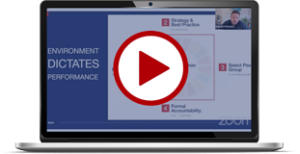Have you ever been to an “update meeting”? These crimes against humanity usually take place first thing in the morning and require employees to pack themselves into crowded meeting rooms to hear progress reports on a variety of projects, most of which they are not personally working on.
The concept of sharing information is of course sound but in my experience the execution of most meetings is awful. In theory, the idea of keeping everyone in an organisation or team on the same metaphorical page or getting people together to share ideas is a good one but the reality is often a painful experience from which attendees take no real value. Now, I’m not a fan of having meetings for meetings sake but when it becomes necessary to get people together in a room there are three simple steps I recommend you take to protect your only finite resource: TIME.
1. Keep It Snappy!
It is common practice to schedule either 30 minutes or 60 minutes for meetings. The problem is that these go into the diary in back to back blocks and no sooner have you finished one event, than you are magically supposed to be in another location to kick off the next session.
Not only does this lead to time slippage and people coming in late but it also encourages you to carry the energy from one meeting into the next. The result: If meeting A went badly, you walk into meeting B feeling negative regardless of the change in subject matter.
I had the good fortune to listen to Sir Clive Woodward speak at the end of last year and he offered an ingenious (or even blindingly obvious!) solution to this problem: Create a rule that meetings can only last 15 minutes or 45 minutes and insist that 15 minutes of “travel time” must be scheduled after each event. Not only does this avoid slippage and lateness but in my experience it also makes meetings more productive. There is something about the shorter appointment time that seems to galvanise thinking, cut out waffle and force people to come to decisions. 30 minutes is comfortable. 15 minutes make things urgent!
2. Get Emotional
Good meetings have a clear objective that all participants are aware of and have bought into. However to be truely effective I think you need to go a level deeper and consider how you want to make others feel.
All too often when I speak to people about why a meeting is taking place the answer I hear is “to tell people about what’s going on with the project” or “to inform the team about the changes taking place”. If your intention for your next meeting is similar then cancel it immediately and send an email instead! I’m serious! Human beings need to be engaged emotionally. Simply passing on information won’t cut it.
If you want to create buy in or get a client excited about your offer, you have to think about what you want them to feel. Maybe you’re trying to inspire, perhaps you want to motivate, you may even want to challenge. Your starting point when thinking about your material should always be the emotional response you want to elicit in the audience. Work in this way and I guarantee that people will have a much greater connection to what you say. It will literally bring your meetings to life.
3. Take Action
There’s nothing more frustrating than arriving at a “follow up meeting” to discover that the things you thought you’d agreed last time round have not been done. Often in a desperate attempt to get out of the room we allow meetings to end without clearly defined action points. This is quite simply a waste of time. Accountability is key.
I recommend sending out a list of next actions to all participants within 24 hours of every meeting. This list can be really simple – what the action point is, the time frame agreed for completion and the name of the person owning the action. Not only does it serve as a reminder of what was agreed, the list can then be circulated before any follow up is arranged to ensure progress (The document also forms the basis for the agenda of the next meeting, killing two birds with one stone.)
Science also suggests that writing the next steps down is much more likely to produce compliance than a verbal agreement meaning that meetings actually result in action, which surely is the whole point!
I’d love to hear how you make the most of your time and ensure meeting are productive and purposeful so please share any tips in the comments box below.
Keep shining!












